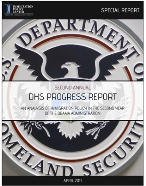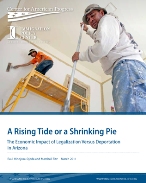Legislation Fails To Live Up To State's Best Intentions
Released on Thu, Mar 10, 2011
Washington D.C. - Late Friday night, the Utah Legislature passed three immigration-related bills that await Governor Herbert's signature or veto. Utah's policy discussions were guided by the principles of a much-lauded Utah Compact, which brought together leaders from political parties, business, labor, and faith-based organizations for a thoughtful dialogue about immigration policy. The Compact was a welcome relief from the angry vitriol that has often dominated the debate and was well-regarded as a rational, solution-based conversation about the complexity of effective immigration reform. It recognizes that the current unauthorized immigrant population is made up of workers, taxpayers, and consumers, and that enforcement strategies must be coupled with reform of our legal system of immigration in order to meet legitimate labor force needs. Unfortunately, the Utah state legislature was not able to realize the Compact's aspirations.
The three bills represent one state's attempt to provide solutions that go beyond the enforcement-only approach of Arizona's SB1070 and similar copycats being considered in other states. It is noteworthy that Utah's legislature acknowledged that immigration is a complex issue, and that a realistic solution involves more than asking people for their papers and deporting those who lack legal status. However, what these well-intentioned Utah legislators have created is an aggressive Arizona-style enforcement program with no counter-balance. The provisions intended to create legal work status and visas are clearly at odds with the Constitution and cannot be implemented by state action alone.Read more...
View Release





